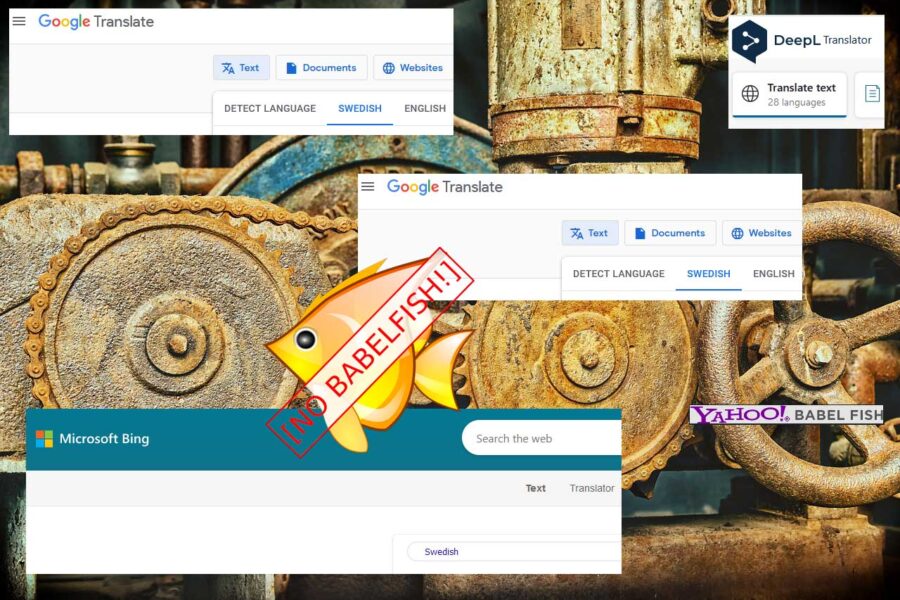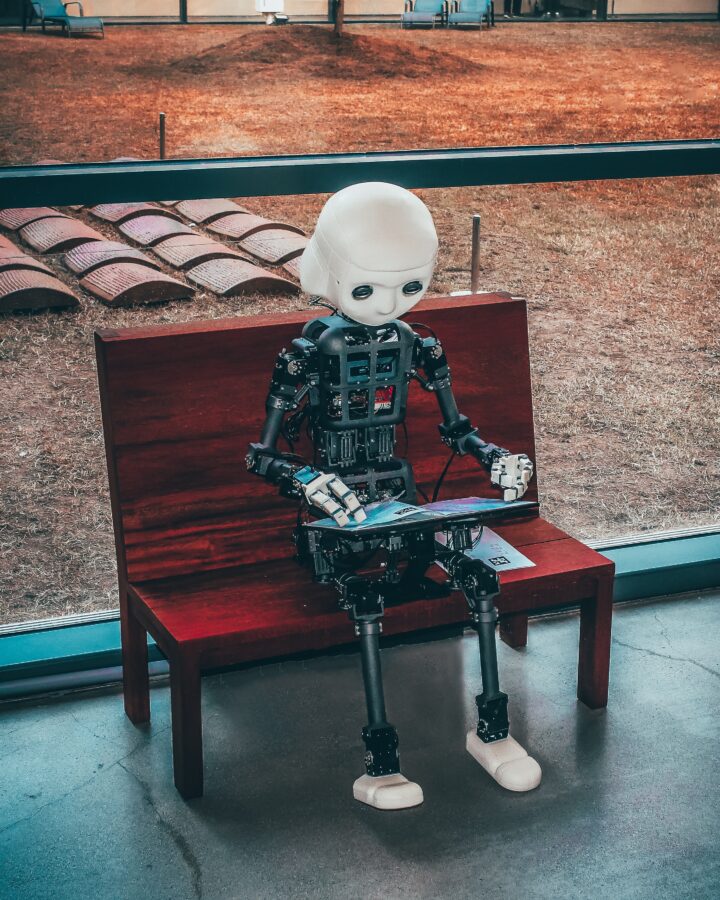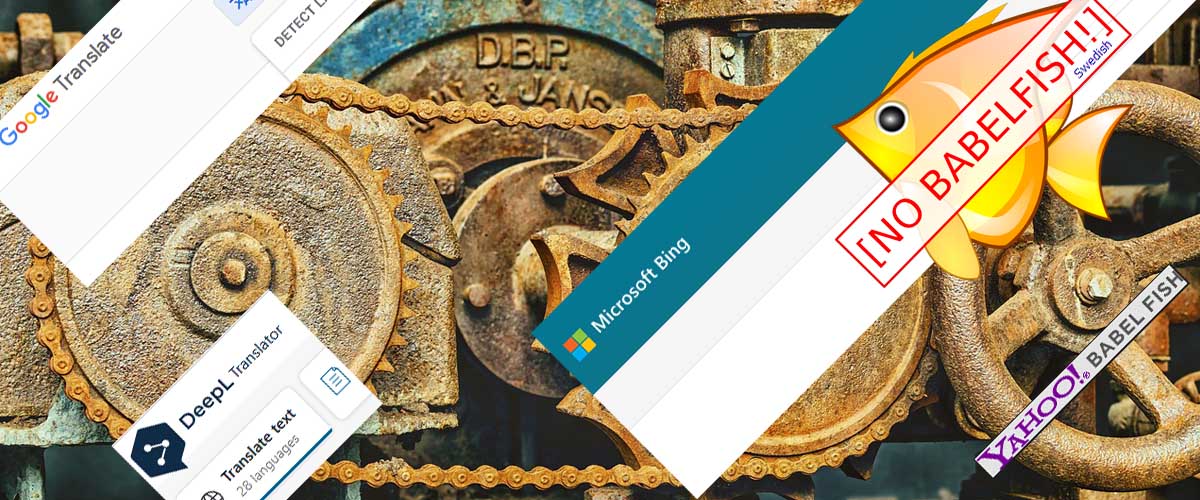Last week I published my translation of a section from Alex Schulman’s novel Överleverna (The Survivors). I think it’s a great passage and I enjoyed sharing my translating efforts. (Though re-reading it now, there are things I’d change.) But I intended from the start not just to translate the text, but to use it as a basis to compare a couple of free translation engines.
That was what I was planning to do this week. However, the more I write about this subject, the more I find I have to write. Rather than a single post, this looks like becoming a short series. Bear with me.
Warning
Nowadays I earn a part of my living by translating shorter texts from Swedish to English. Mostly the texts I translate are technical or educational, with quite a few shorter web pages and the occasional press release. As I’m not a certified translator, I don’t take on legal or medical translating, and generally speaking I don’t translate longer texts or literary texts. Still, it’s fun sometimes to try.
Just as it’s sometimes fun to try using on-line translation programmes. When the first translation machine came on-line (I’m thinking of AltaVista’s Babel Fish in 1997) I remember using it to translate Jenny Joseph’s poem “Warning” back and forth between different languages.
When I am an old woman I shall wear purple
With a red hat which doesn’t go, and doesn’t suit me …If I am an old lady, I wear purple
(Translated from English to Spanish to Bulgarian to Dutch to French back to English.)
With a red hat that doesn’t fit me, it doesn’t fit me …
Dragons
I should probably say the way I usually make translations is via a voice recognition programme called Dragon Naturally Speaking (DNS). Working sentence by sentence, I read the Swedish, make a translation in my head and then dictate the English version. DNS converts my dictation into electronic text, which I can then work on, correct and polish in the computer. (I also use DNS to dictate handwritten texts to put my own creative writing into electronic documents for further development. I’ve written about that here.)
But this is not how I translated Överleverna. Instead I passed it through mechanical translation software and then adapted the result.
More professional translators will often work with dedicated software for computer assisted translation. (Note: there’s a significant difference between mechanical translation and computer assisted translation.) This software allows them to build up – perhaps over years – a database of translated words and phrases. They can pass new texts through the database to give themselves a partial translation, which they can then improve on. (I’m simplifying, out of ignorance. Those professional programmes are beyond my means.)
Meanwhile, the world of mechanical translation has moved on since Babel Fish. Nowadays we have the ubiquitous Google Translate. There’s also Meta’s translation engine that works on Facebook and Instagram. Microsoft’s Bing offers a mechanical translation engine that incorporates something of the original Babel Fish. (Which Microsoft acquired from Yahoo, who got it from AltaVista). These engines are great for getting the gist of something someone has written in a social media post. It’s impressive when they can translate short passages from languages and scripts with which you are not familiar.

Casus belli
On the other hand, the translation fails they produce can be a source of amusement, embarrassment – and potentially (one fears) a casus belli. (For some epic translation fails in respect of the first two, I warmly recommend the YouTube channel now going by the name Twisted Translations.)
The new kid on this block is DeepL, which launched in August 2017 (with a pro version in 2018). DeepL is astounding in the quality of the translations it can produce. I’m certainly impressed by its Swedish to English translations and DeepL is pleased to crow about its successes with other languages. Here, for example. It’s worth noting, though that all the examples given involve translations to or from English paired with French, German and Spanish. I wonder how DeepL does when English is not involved?
Both Google’s engine and DeepL’s are described as “neural machine translation” systems, so they presumably work in a similar way. As I understand it, neural machine translation systems hold very large databases of words and phrases. When you input a sentence in Swedish, say, that you want to translate to French, the engines search their database for existing translations of the words or phrases in your sentence and then string the translated words together into a sentence in the target language, using algorithms to predict the most likely combination.
Pivot
Google is said to “pivot” through English. It translate texts from the input language into English before translating the English into the target language. So translating from Swedish to French, it would translate Swedish > English > French. I’m not sure what DeepL does. Perhaps it translates directly. (But the examples on the page linked above suggest to me it also works through English.)
At the time of writing Google claims to translate between 133 different languages. DeepL started out with a much smaller group of 7 European languages. Now it has built up to 26 languages including Chinese, Japanese, Indonesian, but is still predominantly European language based.
Regardless of how the machine translations work, a lot of their effectiveness must depend on the quality and extensiveness of their databases. They cannot create new language, they can only regurgitate. This means the more predictable the text they are set work with, the more accurate their translation is likely to be. Technical, factual, unadorned text is the easiest for them to work with successfully, and after that, set phrases.
USA:s ekonomi är uppbyggd av flera viktiga sektorer, utmärks av hög flexibilitet och har beskrivits som en ”jobbmaskin” för sin förmåga att skapa sysselsättning.
(From Utrikespolitiska institutet’s Economic overview of the USA)Bing: The U.S. economy is made up of several key sectors, is characterized by high flexibility, and has been described as a “job machine” for its ability to create employment.
Google: The US economy is made up of several important sectors, is characterized by high flexibility and has been described as a “job machine” for its ability to create employment.
DeepL: The US economy is made up of several important sectors, is characterised by high flexibility and has been described as a “jobs machine” for its ability to create employment.
Hej, hur är läget?
(Common Swedish greeting)Bing: Hi, how is the situation?
Google: Hey what’s up?
DeepL: Hey, what’s up?
Translating
But we human beings don’t use factual, unadorned language or set phrases most of the time. We contract and employ slang, we pitch what we say or write to different audiences. Above all we embroider our language with images, metaphors and references from all over the place. We are playful with our language, and never more so than when we are writing creatively. It’s an excellent test of the quality of a mechanical translation service to run a piece of creative writing through it and see what comes out.
And all that gets me to where I wanted to be to talk about the section of Alex Schulman’s Överleverna that I translated last week.
Next week!

Picture credits
In the collage of machine translation software logos, the logos themselves are all screengrabs from the Internet except the No Babelfish fish which is from Wikimedia Commons. The background image is by Peter H from Pixabay.
The little robot reading on a bench is by Andrea De Santis on Unsplash




